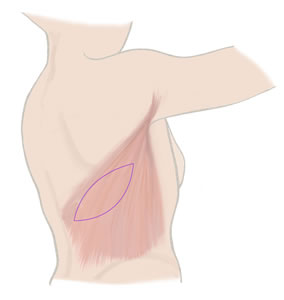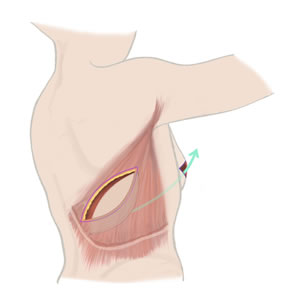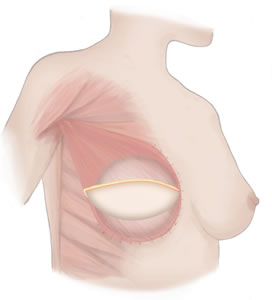The advantages
|
And the disadvantages?
|
Latissimus Dorsi Muscle Reconstruction – overview |
|
| Operation time: | Normally between 3 and 5 hours |
| Hospital Stay: | Between 5 and 7 days |
| Type of Anaesthesia: | General anaesthetic |
| Recovery Time: | Around 6 to 8 weeks |
| Risks of Surgery include: | Bruising and swelling. Scarring.
Less common problems include infection and haematoma. Seroma (swelling in the back where blood/body fluid has collected) is more common. When lymph nodes are cleared, there’s sometimes a risk of lymphedema. Other risks include loss of the skin flap that’s been used for the reconstruction; blood transfusion (unlikely); shoulder and back stiffness; aches and pains; implant extrusion (when the body rejects the implant); and capsular contracture (excessive or invasive scar tissue formation). |
| Further Treatment: | Check up with your surgeon/registrar.
Visits to the Hospital Dressing Clinic. Regular visits to Outpatients department for injections if tissue expanders are used. In some cases, a second operation to replace the tissue expanders with a permanent implant |
| Nipple reconstruction: | Around 3 months later |
| Nipple Tattooing: | 1 month after reconstruction (by your surgical team) |



